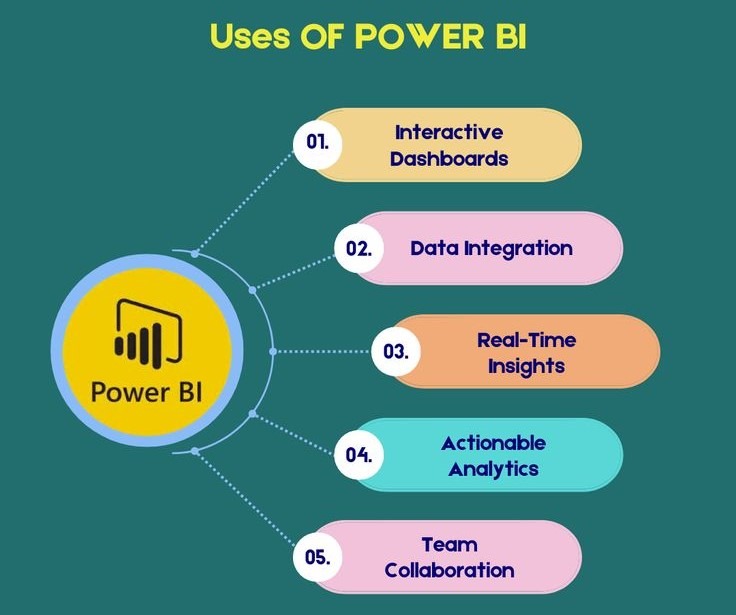Introduction
In today’s data-driven business landscape, integrating your Customer Relationship Management (CRM) system with a powerful business intelligence tool like Power BI is no longer optional—it’s essential for maximizing your investment in customer data. Done right, CRM-Power BI integration transforms raw records into actionable insights, helping teams make smarter, faster, and more profitable decisions.
If you’re ready to unlock the full potential of your CRM data, Skywinds CRM offers seamless Power BI dashboard and reporting capabilities. Explore tailor-made solutions at Skywinds CRM Dashboard Reporting and move towards data-driven growth!

Why Integrate CRM with Power BI?
- Enhanced Business Clarity: CRM systems store a treasure trove of customer and sales data. Power BI allows you to visualize, analyze, and interpret this data, revealing patterns and trends that might otherwise go unnoticed.
- Improved Decision-Making: Aligning CRM workflows with deep analytics helps sales, marketing, and support teams act on real-time information, not just gut instinct.
- Sales and Marketing Synergy: Integration ensures everyone accesses the same trusted data, leading to better campaigns, more accurate forecasting, and higher conversion rates.
Top CRM-Power BI Integration Strategies
1. Native Connector Approach
Many leading CRMs (such as Microsoft Dynamics 365 and Salesforce) come with built-in connectors that directly link to Power BI. With a few clicks, you establish a secure data pipeline, allowing you to quickly build reports and dashboards.
- Pros: Quick setup, minimal coding, official support, good for standard reporting needs.
- Cons: May be limited in customization for complex or highly specific analytics requirements.
- Here is a full guide of Microsoft Dynamic 365-power BI Integration.
2. Custom API-Based Integration
For organizations with unique data models or advanced analytics needs, connecting Power BI to CRM via APIs offers ultimate flexibility. Developers can tailor data extraction, fusion, or transformation to business-specific requirements.
- Pros: Highly customizable, supports complex data structures, adaptable as systems evolve.
- Cons: Requires technical expertise, longer implementation time, needs ongoing maintenance.
3. Third-Party Middleware Solutions
Integration platforms like Zapier or KingswaySoft act as a bridge between CRM and Power BI, especially when out-of-the-box connectors fall short or direct API integration is impractical. Middleware can automate data transfers and orchestrate multi-step workflows.
- Pros: Streamlines integration for multiple systems, often no-code or low-code, saves developer time.
- Cons: May add extra cost, occasional syncing limits, potential data latency.
4. Embedded Power BI Dashboards within CRM
Some CRMs (including Dynamics 365) let you embed Power BI dashboards directly into the CRM interface. Users access interactive data visualizations without switching systems, boosting adoption and workflow efficiency.
- Pros: Unified experience, real-time insights, encourages data-driven work culture.
- Cons: Requires correct role-based access setup, and may be dependent on CRM’s embedding capabilities.
Key Features to Maximize ROI
- Compelling Visualizations: Use Power BI’s drag-and-drop visual tools to create clear dashboards highlighting KPIs like sales pipelines, lead sources, and customer segmentation.
- Automated Refresh & Alerts: Schedule data refreshes and set up notifications for critical changes—stay proactive, not reactive.
- Security Controls: Implement row-level security to ensure users see only the data they’re entitled to, maintaining privacy and compliance.
- Typical Use Cases:
- Sales performance monitoring
- Customer support ticket analysis
- Pipeline health and forecasting
Comparative Table: CRM-Power BI Integration Strategies
| Strategy | Ease of Setup | Flexibility | Scalability | Typical Cost |
| Native Connector | High | Medium | High | Low |
| Custom API-Based Integration | Low | Very High | Depends on Dev | Med-High |
| Third-Party Middleware | Medium | Medium-High | Medium | Med-High |
| Embedded Dashboards | Medium | High | High | Varies |
Implementation Best Practices
- Define Business Goals: Clarify what you hope to achieve (e.g., pipeline visibility, conversion rate analysis) before starting any integration.
- Prepare Clean Data: Ensure CRM data is accurate and standardized to avoid misleading analytics.
- Involve Key Stakeholders: Success depends on buy-in from both business and IT teams.
- Continuous Monitoring: Use Power BI’s tracking features to monitor ongoing performance and refine dashboards as needs evolve.
Real-World Results & Case Study Snapshots
Organizations using a well-executed CRM-Power BI integration report sharper insights, faster responses to sales opportunities, and measurable upticks in ROI. For example, businesses leveraging Skywinds CRM’s advanced dashboard and reporting capabilities have seen reductions in manual reporting time and improved win rates by acting swiftly on accurate data.
Curious how these solutions fuel real growth? Explore the Skywinds CRM dashboard features to see reporting in action.
Conclusion
Choosing the right CRM-Power BI integration strategy is pivotal for boosting business ROI. Whether you opt for native connectors, custom APIs, middleware, or embedded analytics, the goal remains the same: transform CRM data into actionable insights to drive growth, efficiency, and profitability.
Ready to accelerate your data journey? Discover how Skywinds CRM and Power BI dashboards can unlock new levels of business intelligence for your team—starting today!
Frequently Asked Questions (FAQs)
1. What are the main benefits of integrating CRM with Power BI?
Integrating CRM with Power BI enables organizations to turn customer and sales data into actionable insights through interactive dashboards and reports. This leads to better decision-making, enhanced sales and marketing effectiveness, and the ability to quickly spot trends and opportunities.
2. Which CRM systems can be integrated with Power BI?
Power BI supports integration with many popular CRM platforms such as Microsoft Dynamics 365, Salesforce, and other custom or industry-specific CRMs using APIs or third-party connectors. Compatibility depends on the available data connectors and the platform’s API accessibility.
3. How can businesses choose the best CRM-Power BI integration strategy?
The ideal strategy depends on business goals, technical resources, and data complexity. Options include native connectors for simplicity, custom API integrations for flexibility, third-party middleware for multi-system workflows, and embedding dashboards for in-app visualization. Assess ease of use, scalability, and long-term maintenance before choosing.
4. What security measures are important when integrating CRM data with Power BI?
Key security controls include implementing row-level security, managing user permissions diligently, and ensuring encrypted data transfers. Organizations should follow compliance standards relevant to their industry, especially when handling sensitive customer information.
5. How does Skywinds CRM enhance Power BI integration?
Skywinds CRM offers dedicated solutions for integrating with Power BI, featuring customizable dashboards, real-time reporting, and seamless data flows. This ensures users can maximize ROI from their CRM analytics and make informed business decisions with minimal technical hassle.

